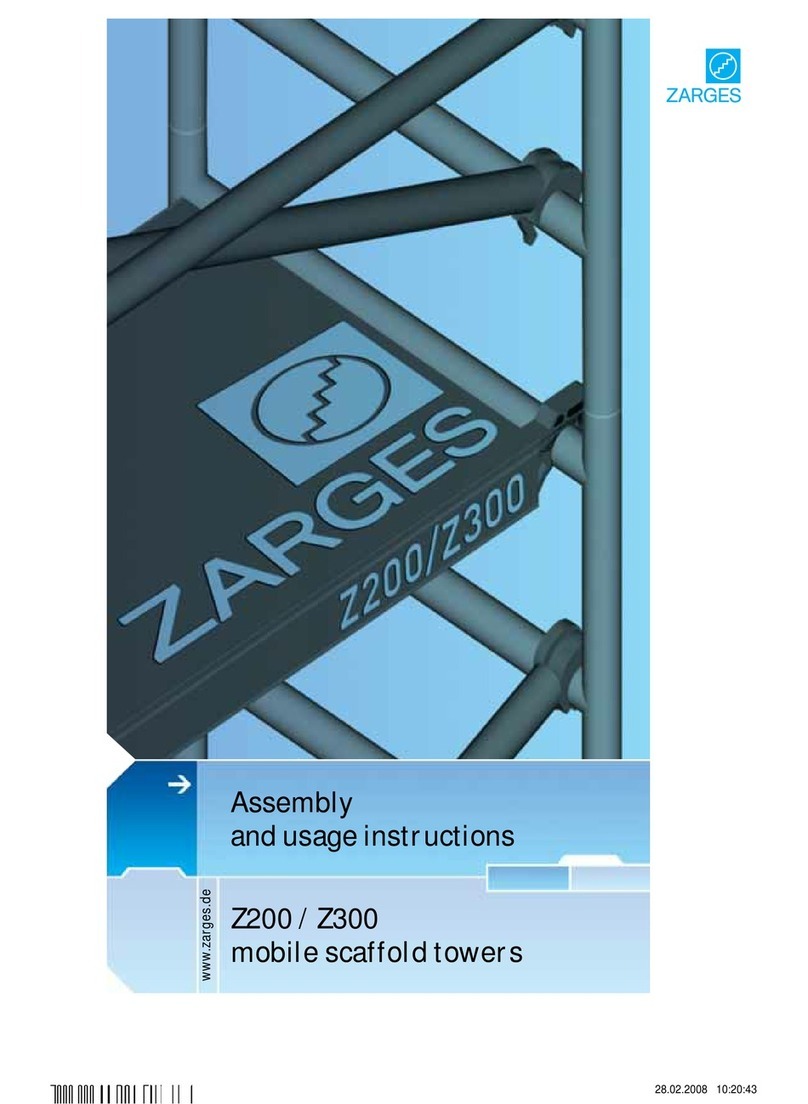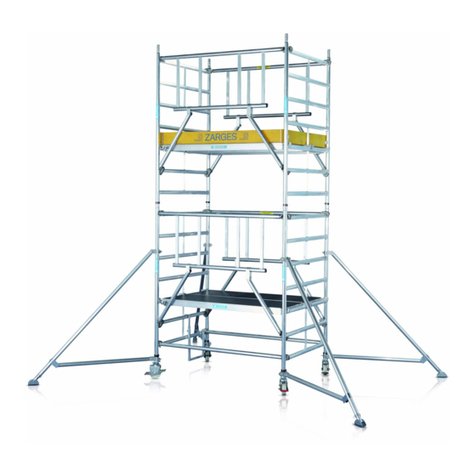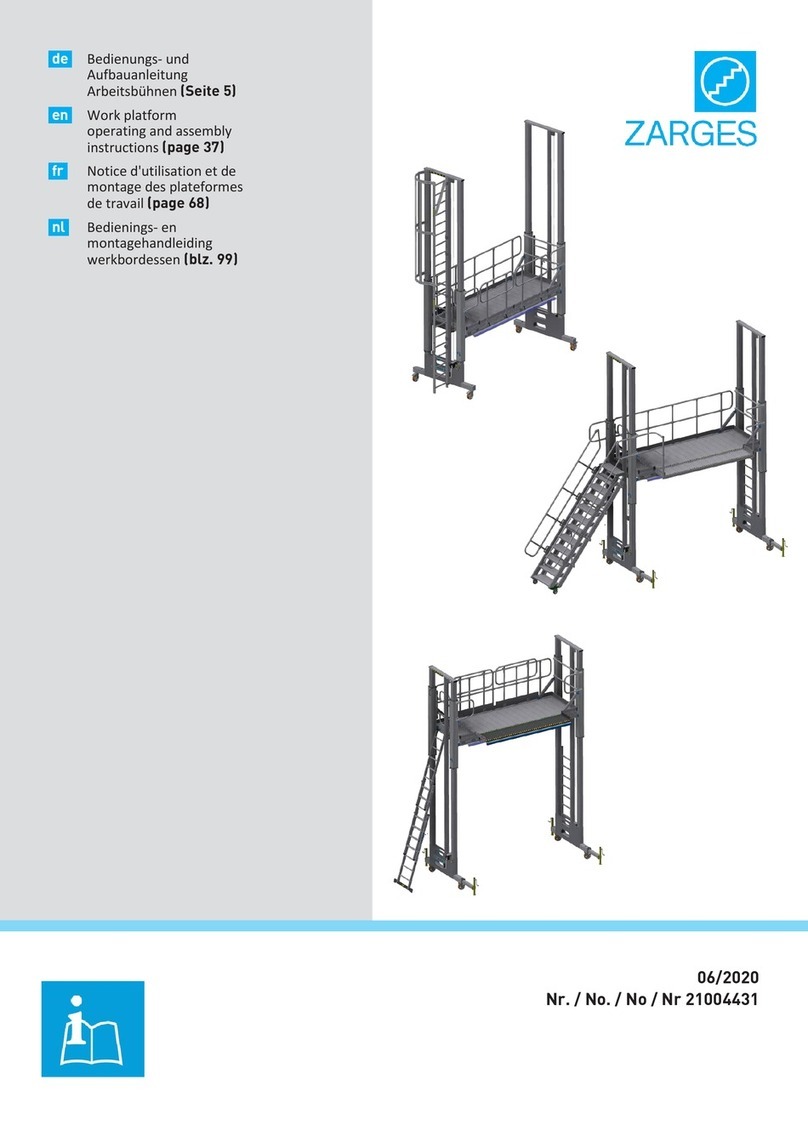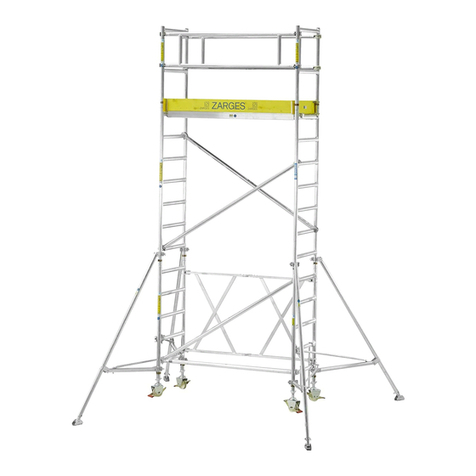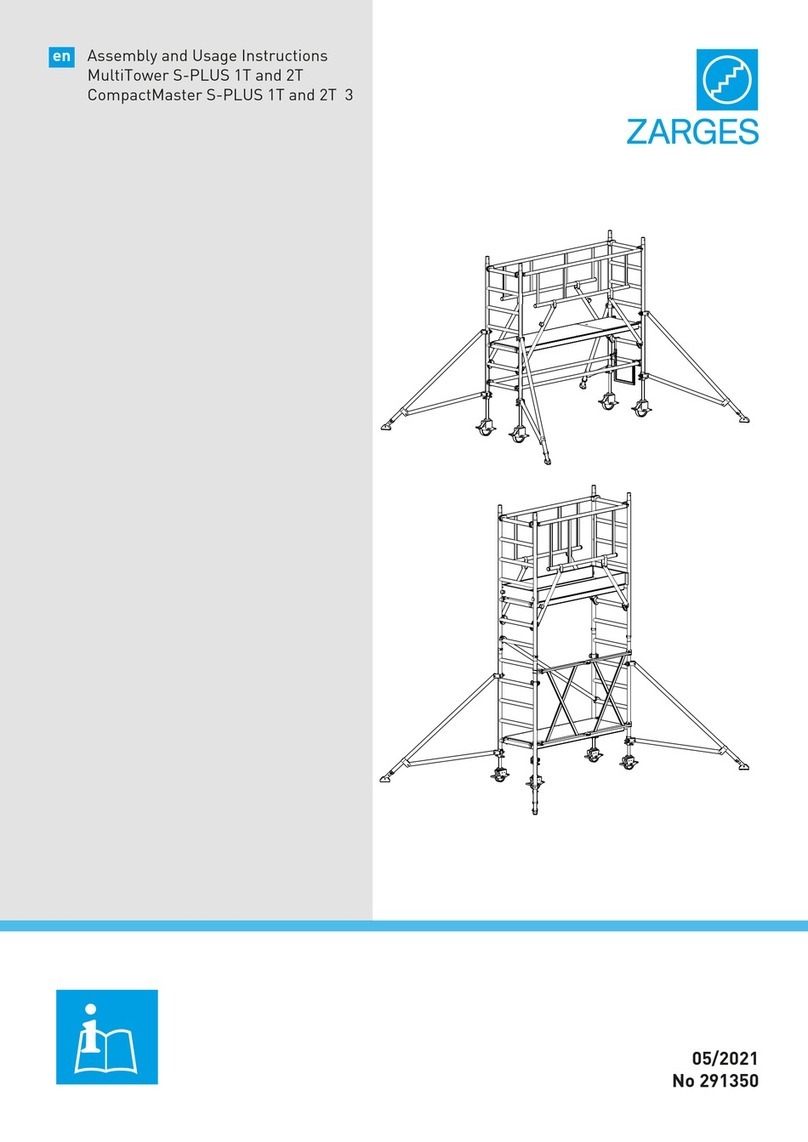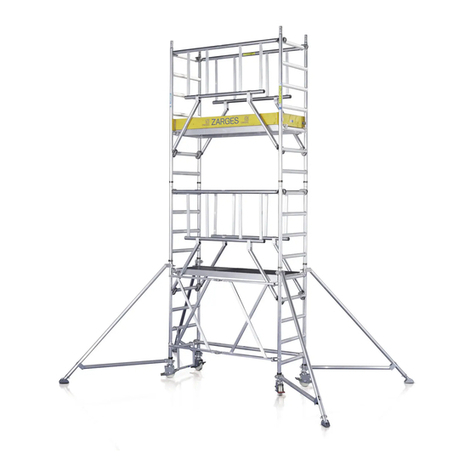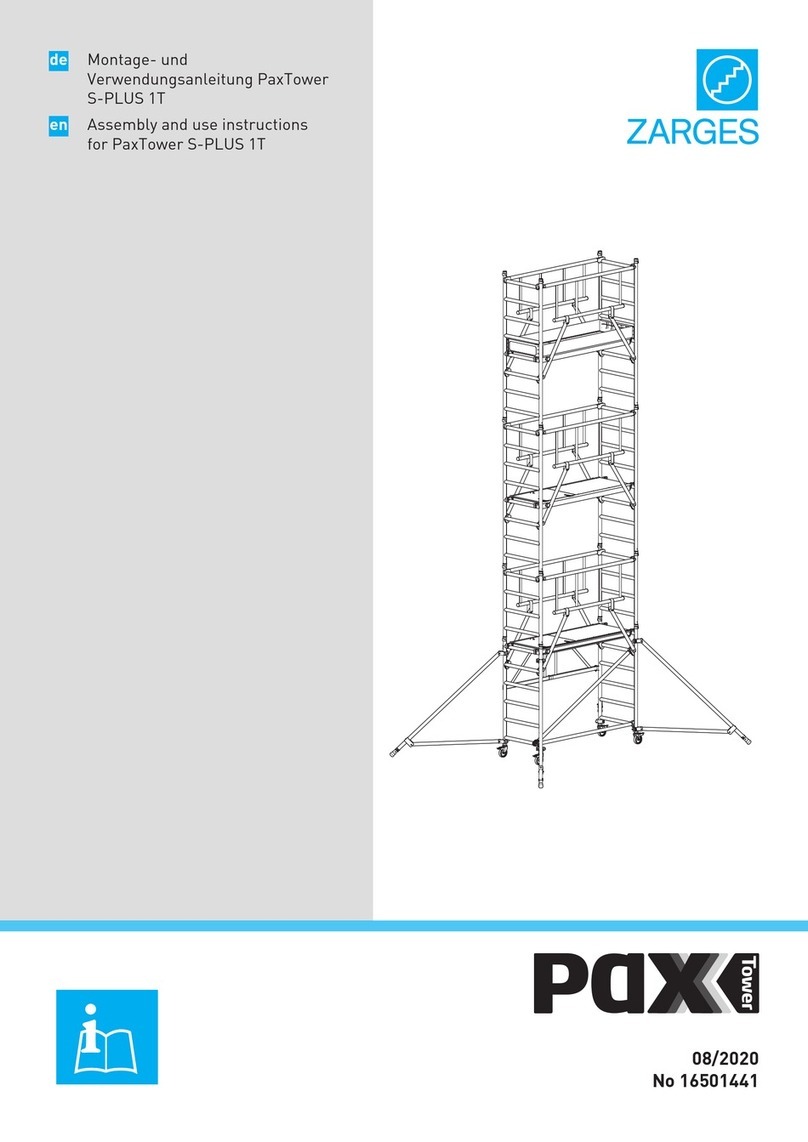
16
2.2 Improper use Any use not described in Section 2.1 qualifies as improper use. The operator bears
sole liability for any damage arising from such use. In particular, the following uses
of the work platform are expressly prohibited:
• use as stair towers or as bridging to other work platforms and buildings,
• use to support other access aids or for any work where the maximum heights de-
fined in Section 2.1 are exceeded,
• use to transport equipment, material or persons,
• the attachment of lifting tackle, hoists or similar equipment,
• use in winds of strengths in excess of 12 m/s, storms, thunderstorms,
• continuous outdoor use (overnight and after the end of the shift).
2.3 Exemption clause The manufacturer assumes no liability for injury or damage arising from one or
more of the following:
• ignorance of or failure to comply with the instructions in this manual,
• insufficiently qualified or trained personnel,
• the use of parts other than original spare parts,
• careless handling of the work platforms,
• unauthorised modifications to the work platforms.
2.4 General safety
instructions These work platforms are designed and built to conform to the technological state
of the art and to comply with all recognised safety standards. They meet the require-
ments of DIN EN 1004. Nevertheless, risks to the life and limb of personnel and
damage to property may arise during their use.
DANGER
DANGER OF INJURY AND FATAL INJURY WHEN SETTING UP AND USING THE WORK PLATFORM!
Follow these basic rules to prevent dangerous situations arising:
> Observe the rules for intended use.
> Always wear protective clothing (safety helmet, safety gloves, safety shoes)
when working on or with the work platform.
> Never leave the work platform unattended in public places. Cordon off the area
immediately surrounding the work platform.
> Carry out all work with the requisite care and attention.
> Before using the work platform, always check that it has been assembled cor-
rectly (see "4. Assembly“).
> Take all prescribed measures to ensure that the work platform is stable.
> Never use the work platform if parts are missing or damaged.
In addition to the safety instructions listed here, the safety instructions for working
with electrical equipment and the safety instructions in the following sections must
be read and complied with.
2.5 Safety instructions
for working with
electrical equipment
It is imperative to comply with the following safety instructions if:
• you are working with electrical equipment on the work platform,
• the work platform is used in the vicinity of electrical units,
• the work platform is used in the vicinity of power lines,
